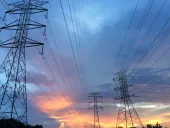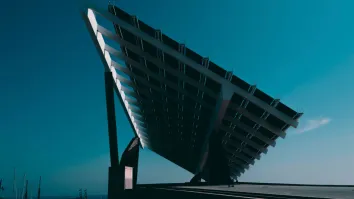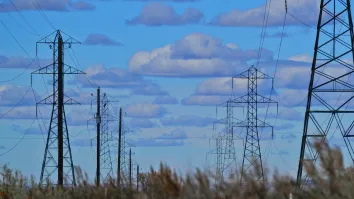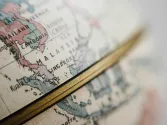Chinese wind turbine manufacturers are poised to overtake their European counterparts
By Tim CampFor several years now, European OEMs Vestas and Siemens Gamesa have firmly held the top two positions in lists of the leading global turbine manufacturers. However, a number of Chinese suppliers are hot on their heels and have been increasing their market share through continued dominance in their domestic market and growth in wider Asian markets and further afield. As the market leader within China, Goldwind currently sits third in the global list and is joined in the top ten by United Power and Envision. With other global up-and-comers including Sinovel and Ming Yang Wind Power, the Chinese turbine market doesn’t lack for depth.
To date, however, none have been able to surpass Vestas and Siemens in terms of global installed capacity. Whilst there are numerous factors underlying this dominance, Chinese turbines have often suffered from a perception that they are of lower quality than their European counterparts. This is all the more pertinent for offshore wind projects, where the high cost of maintenance and repair leaves little appetite for risk.
But the undisputed dominance of the European suppliers could be coming to an end. Over the past few decades, Chinese OEMs have been remarkably successful in catching up with – and matching – the quality of technology produced by those operating predominantly in the more mature European and North American markets. Should Chinese turbine technology continue to progress at this accelerated rate over the next five years, they may well overtake them.
A continued gulf in scale
Currently, the biggest difference between Chinese machinery and their European equivalents is turbine size. This divergence is most apparent in offshore turbines, with MAKE forecasting that new-to-market European offshore turbines will reach 12MW by 2024, whilst the average rated power of Chinese offshore turbines will increase to a more modest 5MW.
This gulf in scale is the result of China’s slow start to offshore wind more generally. Whilst the Chinese government has long held ambitious plans for its offshore sector, implementation proved slow, with planning permissions a particular challenge. With few signs of growth, there was little incentive for Chinese suppliers to produce larger turbines.
However, this situation is about to change. With the recent growth of activity in the Chinese offshore market, many Chinese OEMs have publicised plans to develop larger machines. At the China Windpower event in November, Goldwind unveiled an 8MW model. In addition, Ming Yang Wind Power, Shanghai Electric, Dong Fang Electric Machinery, XEMC and CSIC Haizhuang all have 10MW models under development.
In Europe, MHI Vestas is currently offering a 10MW turbine to the market, whilst GE’s Haliade-X turbine will headline at 12MW. Senvion’s ReaLCoE project aims to develop a turbine of at least 10MW rated power. In the race to larger turbines, European OEMs are currently in the lead, but Chinese OEMs are making up for lost time.
Despite their smaller size, improvements in the reliability and technical sophistication of Chinese turbines will mean that European OEMs will be nervously looking over their shoulders over the next five years or so – particularly when it comes to onshore wind. Here there will be greatest scope for Chinese manufacturers to take advantage of significant cost efficiencies, together with better quality technology, to begin competing with European OEMs in their home markets, and in the emerging markets of Latin America and Africa.
In the global offshore wind markets, however, the longer track record of larger machines will continue to give European OEMs the edge. The cost of maintenance and repair makes the offshore turbine market a conservative one, as owners tend to opt for technology with a track record of reliability. This means that even where Chinese OEMs produce bold innovations in turbine design – such as Ming Yang’s two-bladed downwind turbine with 6.5MW rating – the lack of appetite for risk amongst turbine owners will limit the commercial benefits of these new developments. The one exception to European offshore hegemony will likely be the Chinese market itself, where a strong preference to buy local will see Chinese OEMs dominate.
The three factors underlying Chinese growth
It’s clear then that Chinese OEMs have made rapid strides in an attempt to catch up with, and in some areas overtake, European suppliers. This is the result of three key changes adopted by the Chinese wind industry over the past decade.
First and foremost, amongst these was a renewed emphasis on quality. Chinese OEMs invested heavily in order to increase the reliability of their turbines, whilst still maintaining the low prices for which they were known. Secondly, building initially on imported technology from Europe, they developed their own high-quality indigenous expertise. This development was not limited to IP, but saw Chinese companies also invest heavily in complementary software and in training their engineers to a high standard.
The third factor in the growth of Chinese OEMs has been their new-found focus on overseas sales. Whilst to date they have experienced slow sales in Europe, a number of suppliers have entered the US market, with Goldwind recently securing financing for the 160MW Rattlesnake wind farm in central Texas – its largest US project to date.
Looking to the future
Faced with this Chinese expansion, how should European manufacturers react? Some have attempted to set up shop in China, but will likely struggle to compete with local OEMs on their home turf. As is the case in other industries, European manufacturers will need to focus on technological innovation – particularly in offshore wind where they maintain a clear lead.
Equally, given the scale of the US market, demand for additional capacity will likely prove strong enough to accommodate both European and Chinese OEMs and allow them to compete side-by-side. Indeed, this is where Chinese suppliers can expect to witness their strongest international growth. But given their difficulties in entering the Chinese market, European OEMs are set to focus on other Asian markets, particularly Taiwan, Japan and Korea. This expansion will be necessary if European OEMs are to maintain their leadership positions over the next five years.




















 Advertise
Advertise






